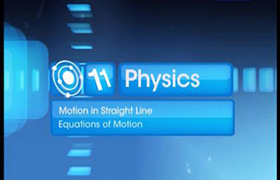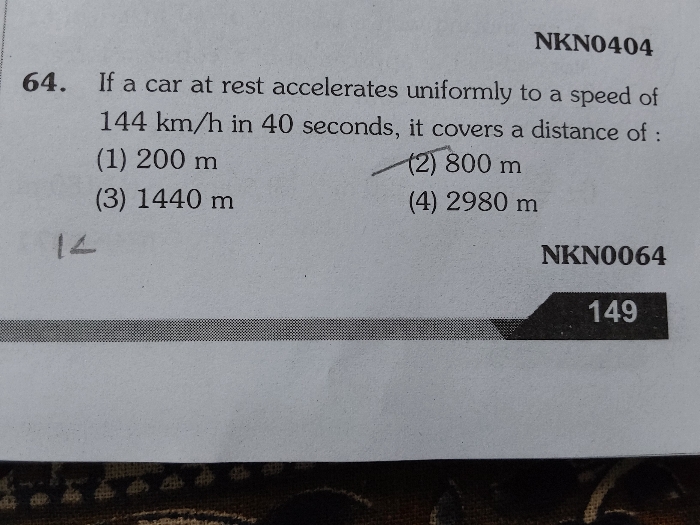CBSE Class 11-science Answered
First train has started from station with acceleration a = 4 m/s2 . After 2 s , second train reached station that moves with constant speed v .
Distance travelled by first train in 2 s is
do = (1/2 ) a t2 = (1/2) × 4 × 2 × 2 = 8 m
Let us find out the time t and speed v of second train so that second train reaches the point of first train .
Then speed less than this speed v is the required speed of second train to prevent collision .
Let t be the time of second train starting from station .
Then distance travelled by second train is , d2 = ( v t )
Distance travelled by first train during this time t is , d1 = u t + (1/2) a t2
Speed u in above expression is speed of first train 2 seconds after it has started from station from rest.
u = a × t = 4 × 2 =8 m/s
Hence, d1 = 8 t + (1/2) × 4 × t2 = 2 t2 + 8 t
when the second train is at station , distance between first and secon train is 8 m .
Hence difference S between first and second train after t seconds is
S = ( d1 + 8 ) - d2 = ( 2 t2 + 8 t + 8 ) - ( v t )
S = 2 t2 - ( v - 8 ) t + 8 ......................... (1)
To get minimum S , we differentiate above expression and equate it to zero
dS/dt = 4t - (v-8) = 0
Hence S will be minimum when (v-8) = 4 t ...................(2)
If we substitute (v-8) = 4t in eqn.(1) , then we get
S = 2t2 - ( 4 t ) t + 8 = 8 - 2 t2
If S = 0 , then from above expression , we get t = 2
By substitutting t = 2 in eqn.(2) , we get v = 16 m/s
Hence , if second train travels with constant speed v = 16 m/s , then second train collides with first train in 2 s .
If second train travels with constant speed v < 16 m/s , then collision is avoided.






